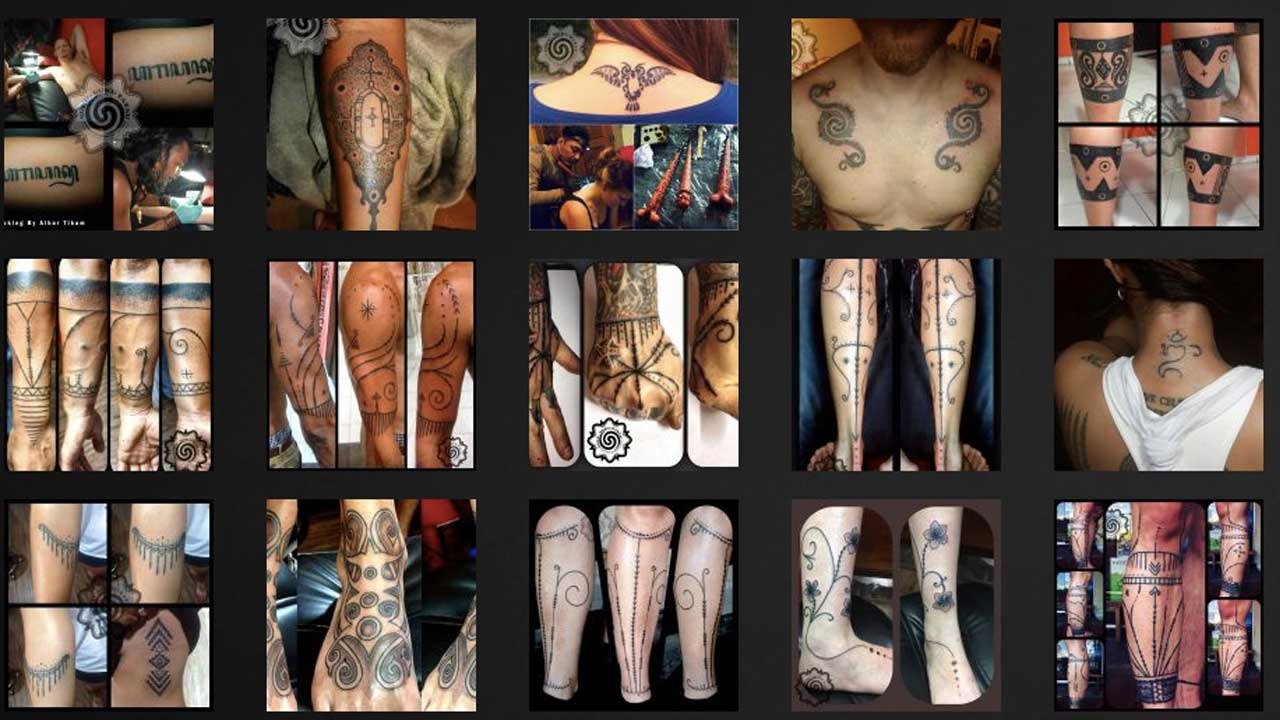IN THE REALM OF SPIRITS: TRADITIONAL DAYAK TATTOO IN BORNEO

IN THE REALM OF SPIRITS: TRADITIONAL DAYAK TATTOO IN BORNEO
BORNEO – for many outsiders the name has been synonymous with a forbidding and isolated wilderness, a steamy rain-soaked place, dangerous and forlorn. While it was among the first lands in Asia to be visited by Europeans, it remained among the last to be mapped.
Borneo is the third largest island in the world. Six major, and numerous minor, navigable rivers traverse the interior and function as trade and communication routes for the indigenous peoples who live here, namely the Dayak. Dayak, meaning “interior” or “inland” person, is the term used to describe the variety of indigenous native tribes of Borneo, each of which has its own language and separate culture. Approximately three million Dayak – Ibans, Kayans, Kenyahs and others – live in Borneo. Most groups are settled cultivating rice in shifting or rain-fed fields supplementing their incomes with the sale of cash crops: ginger, pepper, cocoa, palm oil. However several hundred Penan, nomadic hunter-gatherers, continue to follow a traditional lifestyle in the jungle, one that is rapidly vanishing.
Aside from a few scattered reports of missionaries, traders, and a handful of explorers in the mid-19th century, almost nothing was known about the Dayak and their customs. To these outsiders only one thing was for certain: that the island was inhabited by “primitive” peoples who worshipped pagan gods and spirits and whose knowledge and skills made this land their home.
By 1900, however, anthropological interest in Borneo peaked and became the focus of several museum expeditions by the Dutch and British. With the many ethnological accounts that followed, some of the most interesting material that was generated focused upon the traditional tattooing practices of the Dayak. Tattooing was believed to be a sacred activity that was connected to many aspects of traditional Dayak culture, especially spirit worship and headhunting.
Related Post : Various Style for Bali Tattoo Traditional – By Albar Tikam
SPIRITS, GODS, ANCESTORS & THE CIRCLE OF LIFE
Just as a great warrior was tattooed to mark his achievements in the human hunt, women were tattooed as proof of their accomplishments in weaving, dancing or singing – as well as for protective purposes. Following ritual precautions, weavers communicated with their spirit helpers before initiating a design. It was thought that this action would prevent irritating other spirits represented in a new weaving. Textile work, a hazardous undertaking recognized by the Iban as “women’s war” (kayau indu), was both socially and ritually marked by tattoo. Among the Kayan, tattoo (tedek) was hand-tapped onto the fingers of women in various patterns, although black spikes running from the knuckles to mid-digits was a fairly common design. This motif, called song irang (shoots of bamboo), expresses a connection between plant life and fertility while the anthropomorphic designs above her wrists represent protective ancestor spirits. Floral imagery, symbolizing spiritual powers and relationships, permeates every facet of TRADITIONAL DAYAK TATTOO life. Plants are regarded as a major kind of living thing, sharing the same fundamental properties of life and death as humans. That is why the Iban are so meticulous with the care of their rice (padi) fields; Rice plants are believed to be the souls of ancestors and when ingested they generate physical energy which make the Iban “tough.”
A SPIRITUAL ART FORM
Dayak tattoo is a spiritual art form that merges images of humans, animals, and plants into one unit, expressing the proliferation of life and the integration of living and spiritual beings in the cosmos. Death and fertility were the primary axes around which tattoo creativity spiraled. Tattooing offered visual testimony to the refusal of Dayak individuals to accept the finality of death and assert the indestructibility of their being. By emulating the life of the gods in everyday ritual, the Dayak procured their own form of divine power that ensured the perpetuation of human life in a continuum of eternity. Therefore, tattoos were articulating symbols inscribing implicit Dayak ideologies of existence upon the living canvas of human flesh.
Article © 2000 Lars Krutak
IN THE REALM OF SPIRITS: TRADITIONAL DAYAK TATTOO IN BORNEO
For More Information Call Us :